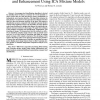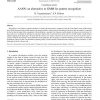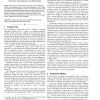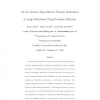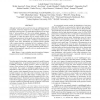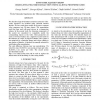TIP
2002
14 years 2 months ago
2002
An unsupervised classification algorithm is derived by modeling observed data as a mixture of several mutually exclusive classes that are each described by linear combinations of i...
NN
2002
Springer
14 years 2 months ago
2002
Springer
The objective in any pattern recognition problem is to capture the characteristics common to each class from feature vectors of the training data. While Gaussian mixture models ap...
PAMI
2000
14 years 2 months ago
2000
CAS
2007
14 years 3 months ago
2007
Today, with the advances of computer storage and technology, there are huge datasets available, offering an opportunity to extract valuable information. Probabilistic approaches ...
PR
2008
14 years 3 months ago
2008
In this paper we address the task of writer identification of on-line handwriting captured from a whiteboard. Different sets of features are extracted from the recorded data and u...
ICASSP
2010
IEEE
14 years 3 months ago
2010
IEEE
Gaussian mixture models (GMMs) are a convenient and essential tool for the estimation of probability density functions. Although GMMs are used in many research domains from image ...
ICASSP
2010
IEEE
14 years 3 months ago
2010
IEEE
Although research has previously been done on multilingual speech recognition, it has been found to be very difficult to improve over separately trained systems. The usual approa...
TRECVID
2007
14 years 4 months ago
2007
We describe a high level feature extraction system for video. Video sequences are modeled using Gaussian Mixture Models. We have used those models in the past to segment video seq...
LREC
2010
14 years 4 months ago
2010
In this work, automatic recognition of Arabic dialects is proposed. An acoustic survey of the proportion of vocalic intervals and the standard deviation of consonantal intervals i...
BIOID
2008
14 years 5 months ago
2008
Abstract. Classifiers based on Gaussian mixture models are good performers in many pattern recognition tasks. Unlike decision trees, they can be described as stable classifier: a s...
